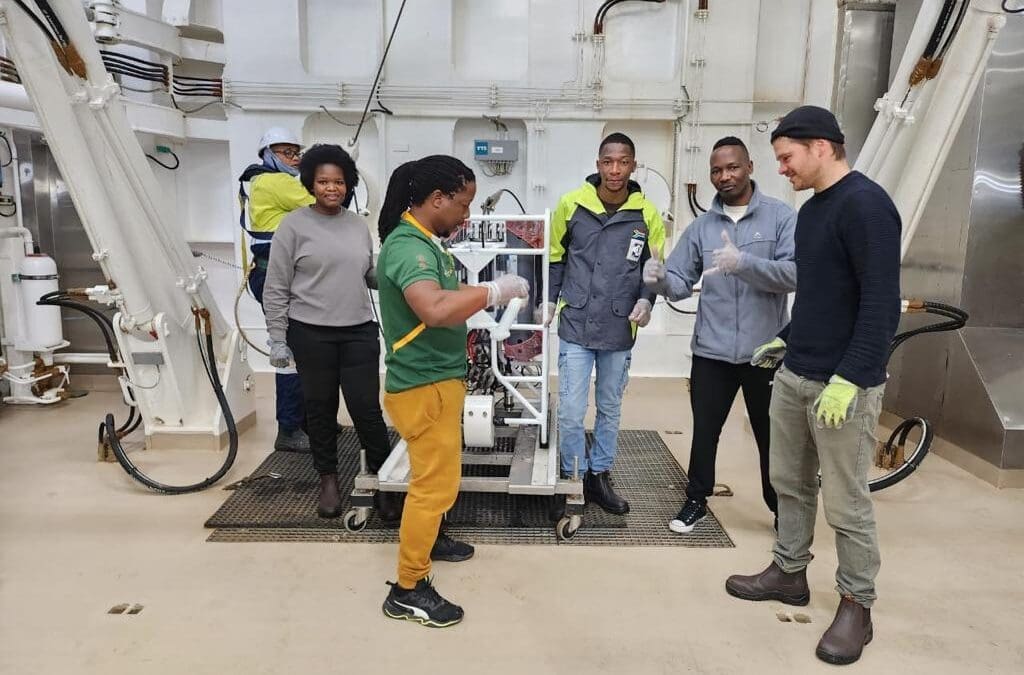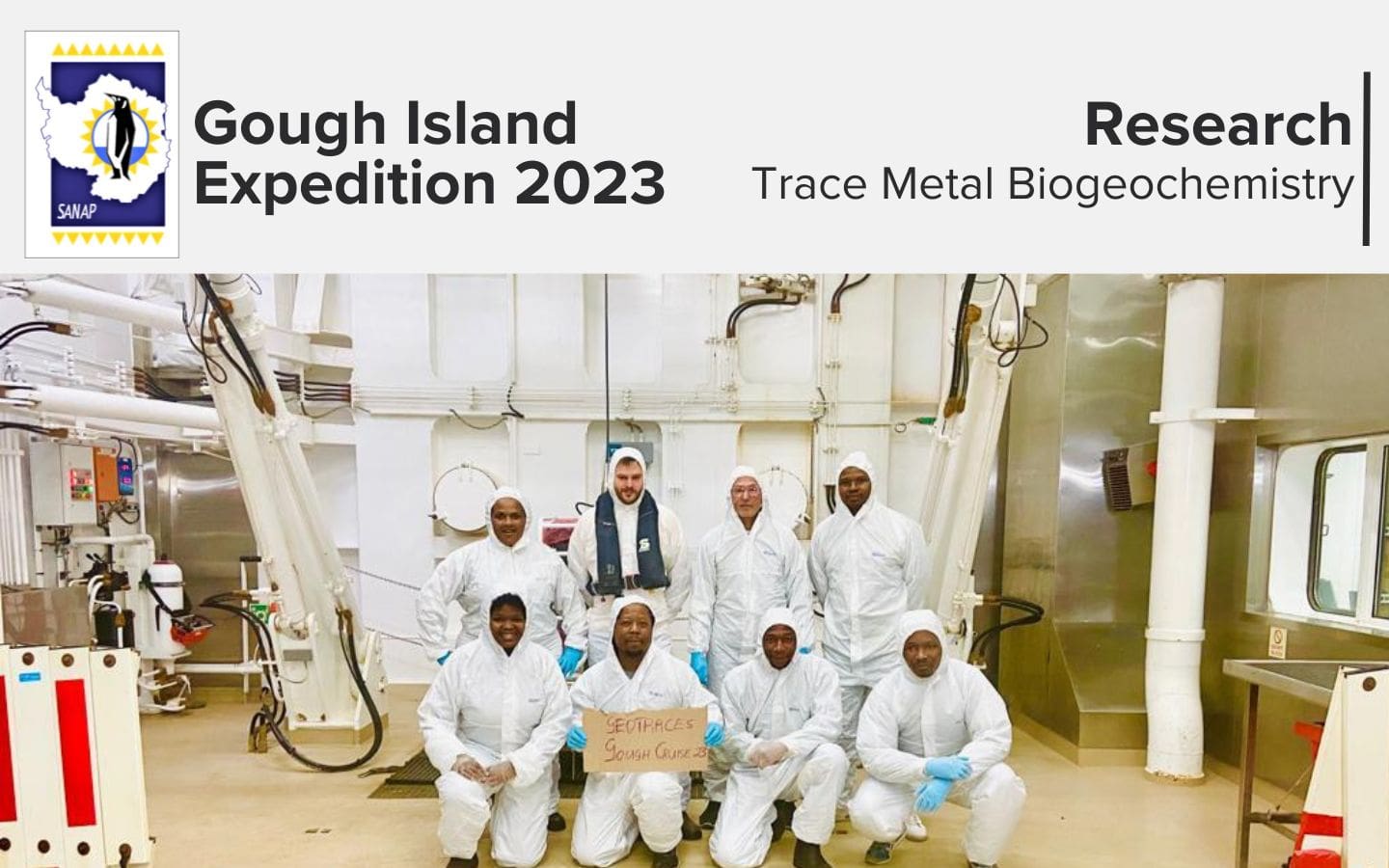
by Ria Olivier | Mar 20, 2024 | Research, SA Agulhas II, SANAP, SEAmester
 Training Tomorrow’s Oceanographers
Training Tomorrow’s Oceanographers
SEAmester’s success is evident in the academic achievements of its participants. A total of 254 students from over 26 institutes and universities have participated in the program, gaining comprehensive knowledge in oceanography, marine biology, atmospheric forecasting and navigation. The curriculum, developed in collaboration with leading marine scientists and lecturers across South Africa, ensures a balance between theoretical concepts and practical training of skills. SEAmester participants have contributed to several news publications, presenting their findings at national and international (SANAP 2023, IUGG 2023, @SEAnetwork 2022, VC award Ocean Womxn) conferences and workshops.
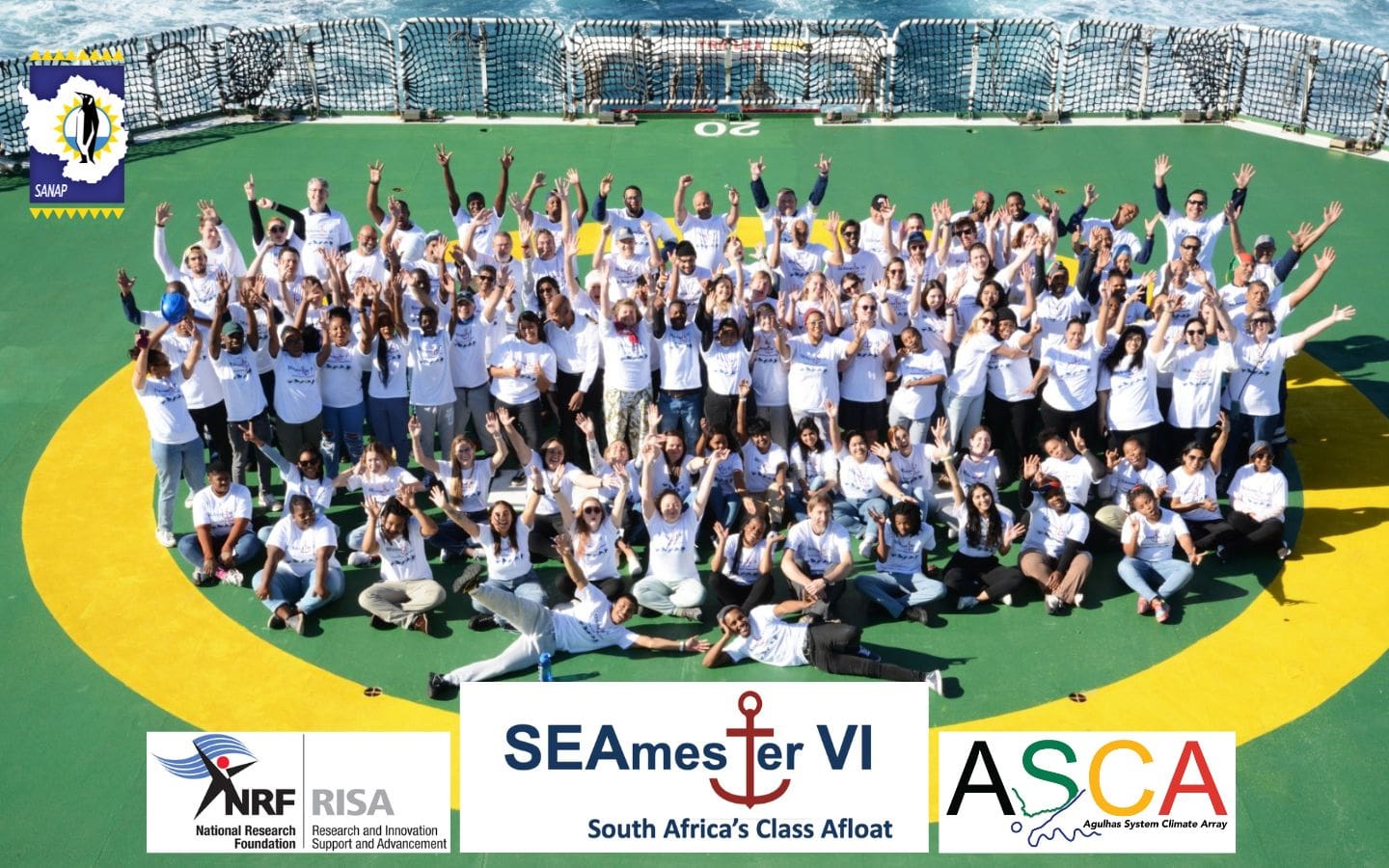 The program’s emphasis on research skills and scientific inquiry has empowered students to continue to make meaningful contributions to the field of marine science. Graduates of SEAmester have gone on to pursue advanced degrees and have secured positions in reputable research institutions, environmental organizations, and marine industries. The alumni network continues to grow, fostering collaboration and knowledge exchange between the cohort of SEAmester students. SEAmester’s success is further exemplified by the growing number of partnerships with academic institutions. Collaborative research projects, joint degree programs, and faculty exchanges have strengthened ties between SEAmester and leading universities in South Africa. International Collaborations: SEAmester is actively exploring partnerships with renowned international institutions to enhance the global reach of its educational offerings. Collaborative research projects and student exchanges will further enrich the program’s diversity and perspective. (Above SEAmester 2023)
The program’s emphasis on research skills and scientific inquiry has empowered students to continue to make meaningful contributions to the field of marine science. Graduates of SEAmester have gone on to pursue advanced degrees and have secured positions in reputable research institutions, environmental organizations, and marine industries. The alumni network continues to grow, fostering collaboration and knowledge exchange between the cohort of SEAmester students. SEAmester’s success is further exemplified by the growing number of partnerships with academic institutions. Collaborative research projects, joint degree programs, and faculty exchanges have strengthened ties between SEAmester and leading universities in South Africa. International Collaborations: SEAmester is actively exploring partnerships with renowned international institutions to enhance the global reach of its educational offerings. Collaborative research projects and student exchanges will further enrich the program’s diversity and perspective. (Above SEAmester 2023)
 As the field of ocean science evolves, SEAmester is committed to incorporating emerging disciplines such as marine robotics, climate science, and biotechnology into its curriculum. This ensures that students are well-prepared for the challenges and opportunities of the future direction and foci of marine sciences. Recognizing the importance of accessibility, SEAmester continues to develop and teach digital learning/mapping/visual platforms to complement its on-board training.
As the field of ocean science evolves, SEAmester is committed to incorporating emerging disciplines such as marine robotics, climate science, and biotechnology into its curriculum. This ensures that students are well-prepared for the challenges and opportunities of the future direction and foci of marine sciences. Recognizing the importance of accessibility, SEAmester continues to develop and teach digital learning/mapping/visual platforms to complement its on-board training.
“SEAmester gave me hope… hope that if you look, opportunities will unfold.” – Ntando.
Below examples of the many articles and presentations coming out of the programme…
A report which is a poll of all 6 SEAmester student cohorts on the importance of their SEAmester experience in shaping their studies, career trajectory etc. will be published soon.
IMAGES available on ALSA archive
Text by Isabelle Ansorge.

by Ria Olivier | Feb 29, 2024 | Biogeochemistry, geochemistry, Research, SA Agulhas II, SANAP, SANAP Student, South Atlantic, Southern Ocean

 The third session within the Marine and Antarctic Research Strategy research theme: Oceans and marine ecosystems under global change chaired by Suzanne Fietz of Stellenbosch University. The presentations resort under the title ‘Southern Ocean productivity: drivers and consequences. The session was introduced by Susanne Fietz and the alignment to MARS. (Above: group photo – Photo credit Suzanne Fietz)
The third session within the Marine and Antarctic Research Strategy research theme: Oceans and marine ecosystems under global change chaired by Suzanne Fietz of Stellenbosch University. The presentations resort under the title ‘Southern Ocean productivity: drivers and consequences. The session was introduced by Susanne Fietz and the alignment to MARS. (Above: group photo – Photo credit Suzanne Fietz)
 Above (l-r): Liam Quinlan, Emtia Wium, Johan Viljoen, Asmita Singh, Jared Walsh (Stellenbosch University)
Above (l-r): Liam Quinlan, Emtia Wium, Johan Viljoen, Asmita Singh, Jared Walsh (Stellenbosch University)
- Liam Quinlan: Characterising phytoplankton communities: A Southern Ocean case study of environmental coupling. (Abstract)
- Amelia Deary: Early community development at the Southern Ocean Marginal Ice Zone. (Abstract)
- Sadiyah Rawat: The role of the island mass effect in enhancing productivity and carbon export in the Subantarctic Ocean. (Abstract)
- Emtia Wium: Impact of metals in aerosols and dust on marine phytoplankton: South Africa. (Abstract)
- Sina Wallschuss: The seasonality and origins of nitrous oxide in the Atlantic sector of the Southern Ocean. (Abstract)
- Faith February: Observations of Southern Ocean marine aerosols in Simon’s Town, False Bay. (Abstract)
- Susanne Fietz: General discussion
- Mhlangabezi Mdutyana: Nitrification in the Southern Ocean: controls, kinetics, and biogeochemical implications. (Abstract)
- Susanne Fietz: Trace metals and phytoplankton. (Abstract)
 Above (l-r): Amelia Deary, Sadiyah Rawat, Sina Wallschuss, Faith February, Mhlangabezi Mdutyana (UCT)
Above (l-r): Amelia Deary, Sadiyah Rawat, Sina Wallschuss, Faith February, Mhlangabezi Mdutyana (UCT)

 Sarah Fawcett(left) could not attend, but her and Dr Katye Altieri (right)students gave presentations during this session. Sarah Fawcett (abstract): Nanoplankton: the dominant vector for carbon export across the Atlantic Southern Ocean in spring.
Sarah Fawcett(left) could not attend, but her and Dr Katye Altieri (right)students gave presentations during this session. Sarah Fawcett (abstract): Nanoplankton: the dominant vector for carbon export across the Atlantic Southern Ocean in spring.
 Suzanne Fietz and the Stellenbosch University Earth Sciences team submitted an excellent e-poster Asmita Singh(e-poster) and Johan Viljoen (abstract) and Jared Walsh(abstract) were not able to attend the symposium in person.
Suzanne Fietz and the Stellenbosch University Earth Sciences team submitted an excellent e-poster Asmita Singh(e-poster) and Johan Viljoen (abstract) and Jared Walsh(abstract) were not able to attend the symposium in person.

by Ria Olivier | Feb 28, 2024 | Engineering, Research, SA Agulhas II, SANAP, SANAP Student
 Another session within the Marine and Antarctic Research Strategy research theme : Innovation and engineering was chaired by Annie Bekker of the Sound and Vibration Group (SVG) at Stellenbosch university. This was an evening session done in a round table format and included international speakers from Finland. Prof Bekker gave an overview of the research and the sessions format tool on a round table/panel discussion. (Picture: Presenters of the session at the venue)
Another session within the Marine and Antarctic Research Strategy research theme : Innovation and engineering was chaired by Annie Bekker of the Sound and Vibration Group (SVG) at Stellenbosch university. This was an evening session done in a round table format and included international speakers from Finland. Prof Bekker gave an overview of the research and the sessions format tool on a round table/panel discussion. (Picture: Presenters of the session at the venue)
 Above (l-r): Annie Bekker, Gerhard Durandt, Chante Van der Spuy, Nico de Koker
Above (l-r): Annie Bekker, Gerhard Durandt, Chante Van der Spuy, Nico de Koker
- Annie Bekker SA Agulhas II – Flagship for vessel 4.0. (Abstract)
- Gerhard Durandt The Development of a Structural Digital Twin for the SA Agulhas II. (Abstract)
- Chante Van der Spuy The Classification of Multi-Impact Events by the Application of Inverse Methods and Machine Learning. (Abstract)
- Nico de Koker Inversion and Extreme Value Analysis of Ice Loading on Propulsion Shaft of the SA Agulhas II. (Abstract)
 Above(l-r): Micaela Melim, Ben Steyn, Brendon Nickerson, Nicole Taylor
Above(l-r): Micaela Melim, Ben Steyn, Brendon Nickerson, Nicole Taylor
- Micaela Melim Expanding the Capabilities of Mariner 4.0: A human-centred monitoring and research tool. (Abstract)
- Ben Steyn A Longitudinal Study of the Open-Water Performance of an Ice-Class Vessel. (Abstract)
- Brendon Nickerson Inverse calculations of ice impacts on propulsion machinery. (Abstract)
- Nicole Taylor The berth of Mariner 4.0: A human-centred monitoring and research tool. (Abstract)
 International speakers join the session and Sarah Nicholson of SOCCO present on robotics innovation. JP Barnard gave a presentation on data management during the cross-theme session chaired by Anne Treasure on day 1. Above(l-r): Jukka Tuhkuri, Miko Lensu, Sarah Nicholson, JP Barnard
International speakers join the session and Sarah Nicholson of SOCCO present on robotics innovation. JP Barnard gave a presentation on data management during the cross-theme session chaired by Anne Treasure on day 1. Above(l-r): Jukka Tuhkuri, Miko Lensu, Sarah Nicholson, JP Barnard
- Jukka Tuhkuri Ice Load measurement and ice condition monitoring onboard S.A. Agulhas II. (Abstract)
- Miko Lensu Sea ice research of Finnish Meteorological Institute. (Abstract)
- Sarah Nicholson South African Robotics and Ocean Technology Innovation Centre (SA-RobOTIC). (Abstract)

by Ria Olivier | Feb 21, 2024 | Antarctica, Marion Island, Overwintering Team, SA Agulhas II, SANAE IV, SANAP, Stations, Take-Over Operations
 It was a great event to welcome back the SANAE62 overwintering team after they spent more than a year at Antarctica. Dr Aby Paton(front 3rd form left), medical doctor of the team did not return as she will be staying on at SANAEIV as team leader and medical doctor for SANAE63.
It was a great event to welcome back the SANAE62 overwintering team after they spent more than a year at Antarctica. Dr Aby Paton(front 3rd form left), medical doctor of the team did not return as she will be staying on at SANAEIV as team leader and medical doctor for SANAE63.

 The event was organised by Ms Chuma Phamoli, Director of Antarctic and Southern Oceans Islands Support. Dr L Fikizolo, Deputy Director of Oceans and Coasts, gave the welcome speech and thanked everyone on the voyage for their dedication and hard work to make the take over period successful. “This was the first season that the vessel had cover two destinations (Antarctica and Marion Island) on both the out bound and in bound legs of the voyage. The voyage also gave the Department of Public Works and Infrastructure (DPWI) the necessary platform to undertake their annual maintenance activities at the SANAE IV base and the removal of old infrastructure on Marion Island.” – DFFE
The event was organised by Ms Chuma Phamoli, Director of Antarctic and Southern Oceans Islands Support. Dr L Fikizolo, Deputy Director of Oceans and Coasts, gave the welcome speech and thanked everyone on the voyage for their dedication and hard work to make the take over period successful. “This was the first season that the vessel had cover two destinations (Antarctica and Marion Island) on both the out bound and in bound legs of the voyage. The voyage also gave the Department of Public Works and Infrastructure (DPWI) the necessary platform to undertake their annual maintenance activities at the SANAE IV base and the removal of old infrastructure on Marion Island.” – DFFE


 DFFE preparations for welcoming ceremony(image left). Zaid Watson and Mawonga Mandleni provided entertainment while everyone was waiting (image right)
DFFE preparations for welcoming ceremony(image left). Zaid Watson and Mawonga Mandleni provided entertainment while everyone was waiting (image right)


 Family, friend and colleagues wait to greet everyone
Family, friend and colleagues wait to greet everyone
And then the S.A, Agulhas II arrive at East Pier with those on board




WELOME SPEECH Video Recording MEDIA INVITE

by Ria Olivier | Feb 16, 2024 | Data Management, Marion Island, Prince Edward Island, Research, SA Agulhas II, Science, Uncategorised
 During the 6th Symposium sessions were allocated to cross cutting disciplines and it led to great presentations and discussions. 12- 16 February is International Love Data Week with the theme “My Kind of Data” and this is about the data presentations at the SANAP Symposium “the SANAP community kind of data.”
During the 6th Symposium sessions were allocated to cross cutting disciplines and it led to great presentations and discussions. 12- 16 February is International Love Data Week with the theme “My Kind of Data” and this is about the data presentations at the SANAP Symposium “the SANAP community kind of data.”
Data Management
 Anne Treasure(right) South Africa’s representative at Standing Committee on Data Management(SCADM) at SCAR and Data Products and Society Manager of the South African Polar Institute(SAPRI) chaired the main session on data management. This session included very interesting presentations from various science disciplines.
Anne Treasure(right) South Africa’s representative at Standing Committee on Data Management(SCADM) at SCAR and Data Products and Society Manager of the South African Polar Institute(SAPRI) chaired the main session on data management. This session included very interesting presentations from various science disciplines.



Above(l-r): Leigh McGaughey, JP Barnard, Bjorn Boyes
- First Presentation was by Leigh McGaughey on “Ecosystem modelling to explore ecosystem dynamics at the Prince Edward Islands.” (abstract)
- Data management with JP Barnard delivering a presentation on “Management of Recorded Voyage Data for the SA Agulhas II.” and discuss intricate models to ensure vessel data is manage correctly. (Abstract)


- Bjorn Boyes had everyone listening to his talk ” on how to digitally construct sub-Antarctic Marion Island. (Abstract)



On the 30th November more data presentations was given in an ad hoc session chaired by Christel Hansen. Above(l-r): David Hedding, Christel Hansen, Pierre Cilliers
- David Hedding: A geospatial database for the sub-Antarctic Prince Edward Islands (Abstract) Read more here and see the dataset
 Christel Hansen delivered a presentation on “Consistent mapping and geospatial information representation in the Antarctic and sub-Antarctic: why South Africans should care.” (Abstract)
Christel Hansen delivered a presentation on “Consistent mapping and geospatial information representation in the Antarctic and sub-Antarctic: why South Africans should care.” (Abstract)- During the last research theme session chaired by Stefan Lotz of SANSA, Pierre Cilliers delivered a presentation on ” The long-term variation of the geomagnetic field in Antarctica as measured in Hermanus, Maitri and at SANAE-IV since 2007.” (Abstract)

by Ria Olivier | Oct 30, 2023 | Environment, geochemistry, Gough Island, News, Oceanography, Research, SA Agulhas II, SA Polar Research Infrastructure, SANAP, SAPolarRI, SAPRI, Science, South Atlantic, Southern Ocean, sub-Antarctic, Tristan da Cunha
Research team on the recent Gough Island takeover expedition.

Phytoplankton are microscopic plants that live in the ocean, and just like plants on land they need to have enough food to grow and be happy. However, some places in the ocean don’t have enough food for them whereas some places do. The Southern Ocean Carbon & Climate Observatory (SOCCO) team based at CSIR, Trace Metals team based at Stellenbosch University (TracEx) and the Department of Forestry, Fisheries and the Environment: Oceans and Coasts team are trying to figure out where those places are (in the Southern Ocean).
During the Gough Island takeover expedition:
The Trace Metal Biogeochemistry research teams sampled upstream and downstream of Gough Island to look at how the Antarctic Circumpolar Current (ACC) interacts with the island to resuspend sediments from the seafloor. This resuspended sediments acts as a source of trace metals to the surface mixed layer in support of phytoplankton blooms. The team used a 12 bottle mini-CTD rosette system (see image below, right) to sample for dissolved trace metals, particulate trace metals and organic trace metal chemistry.
| TEAM | Trace Metal Biogeochemistry |
| Projects Name | Seasonal Iron speciation in the Southern Ocean, from open ocean environments to naturally fertilized sub-Antarctic Islands (Marion and Gough Island) |
| Principal Investigator | Dr Thomas Ryan-Keogh | Senior Researcher at the Southern Ocean Carbon-Climate Observatory (SOCCO), CSIR South Africa |
| Co-Principal Investigator (On board DFFE team leader) | Dr TN Mtshali | Department of Forestry, Fisheries and the Environment (DFFE) |
| Co-Principal Investigator | Prof AN Roychoudhury | Stellenbosch University (TracEx) |
| SOCCO/TracEx on board team leader | Olie Valk | TracEx |
On board team member (PhD Student)
| Thapelo Ramalepe | SOCCO-TracEx |
On board team member (MSc Student)
| Miranda Sitofile | SOCCO-TracEx |
| On board DFFE team member | Mutshutshu Tsanwani | DFFE |
| On board DFFE team member | Kanyisile Vena | DFFE |
| On board DFFE team member | Hassan Ismael | DFFE |
| On board DFFE team member | Mbulelo Makhetha | DFFE |
| On board team members | Including all ship-based scientists sampling for trace metals |
The project in more detail:
The Southern Ocean (SO) is one of the largest high-nutrient low-chlorophyll regions in the World’s Ocean, where primary productivity is limited by iron bioavailability, thereby impacting the strength and efficiency of biological carbon pump. There are, however, exceptions with large phytoplankton blooms persistently observed downstream of the sub-Antarctic Islands. While extensive research has focussed on iron-biogeochemistry around Kerguelen and Crozet islands, no such studies have been conducted at Marion and Gough islands.
Furthermore, whilst our previous studies have made substantial advances toward addressing the gaps in seasonal data coverage through the Southern oCean seAsonaL Experiment (SCALE) 2019 winter and spring expeditions, there is still a paucity of dissolved iron data in the SO, especially from autumn to late spring. This is severely hampering our understanding of the full seasonal biogeochemical iron cycle and its impact on primary production. This project aims to continue its focus on seasonality by expanding seasonal coverage of iron measurements to include autumn (Marion) and late-spring (Gough) expeditions for more comprehensive coverage of the SO seasonal cycle, with a particular focus on quantifying biogeochemical cycling of iron-pool around these understudied islands.
This project is funded by: The National Research Foundation, South African National Antarctic Programme funding (NRF-SANAP).
Current NRF-SANAP funded projects
Visit SOCCO here! Visit TracEx here!
Featured Image: L-R (Back): Kanyisile Vena (DFFE), Ole Valk (TracEx), Hassan Ismael (DFFE), Mbulelo Makhetha (DFFE); (front) Miranda Sitofile (SOCCO-TracEx), Thato Mtshali (DFFE), Thapelo Ramalepe (SOCCO- TracEx), Mutshutshu Tsanwani (DFFE).
Project information supplied by Dr Thomas Ryan-Keogh. Images supplied by Thapelo Ramalepe.
Anche Louw, South African Polar Research Infrastructure, 30 October 2023.
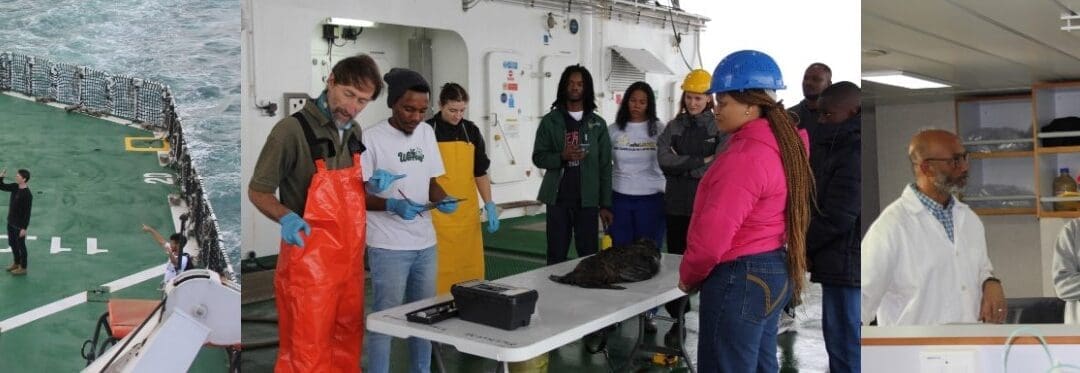
 Training Tomorrow’s Oceanographers
Training Tomorrow’s Oceanographers The program’s emphasis on research skills and scientific inquiry has empowered students to continue to make meaningful contributions to the field of marine science. Graduates of SEAmester have gone on to pursue advanced degrees and have secured positions in reputable research institutions, environmental organizations, and marine industries. The alumni network continues to grow, fostering collaboration and knowledge exchange between the cohort of SEAmester students. SEAmester’s success is further exemplified by the growing number of partnerships with academic institutions. Collaborative research projects, joint degree programs, and faculty exchanges have strengthened ties between SEAmester and leading universities in South Africa. International Collaborations: SEAmester is actively exploring partnerships with renowned international institutions to enhance the global reach of its educational offerings. Collaborative research projects and student exchanges will further enrich the program’s diversity and perspective. (Above SEAmester 2023)
The program’s emphasis on research skills and scientific inquiry has empowered students to continue to make meaningful contributions to the field of marine science. Graduates of SEAmester have gone on to pursue advanced degrees and have secured positions in reputable research institutions, environmental organizations, and marine industries. The alumni network continues to grow, fostering collaboration and knowledge exchange between the cohort of SEAmester students. SEAmester’s success is further exemplified by the growing number of partnerships with academic institutions. Collaborative research projects, joint degree programs, and faculty exchanges have strengthened ties between SEAmester and leading universities in South Africa. International Collaborations: SEAmester is actively exploring partnerships with renowned international institutions to enhance the global reach of its educational offerings. Collaborative research projects and student exchanges will further enrich the program’s diversity and perspective. (Above SEAmester 2023) As the field of ocean science evolves, SEAmester is committed to incorporating emerging disciplines such as marine robotics, climate science, and biotechnology into its curriculum. This ensures that students are well-prepared for the challenges and opportunities of the future direction and foci of marine sciences. Recognizing the importance of accessibility, SEAmester continues to develop and teach digital learning/mapping/visual platforms to complement its on-board training.
As the field of ocean science evolves, SEAmester is committed to incorporating emerging disciplines such as marine robotics, climate science, and biotechnology into its curriculum. This ensures that students are well-prepared for the challenges and opportunities of the future direction and foci of marine sciences. Recognizing the importance of accessibility, SEAmester continues to develop and teach digital learning/mapping/visual platforms to complement its on-board training.
 Training Tomorrow’s Oceanographers
Training Tomorrow’s Oceanographers

 Above (l-r): Liam Quinlan, Emtia Wium, Johan Viljoen, Asmita Singh, Jared Walsh (Stellenbosch University)
Above (l-r): Liam Quinlan, Emtia Wium, Johan Viljoen, Asmita Singh, Jared Walsh (Stellenbosch University) Above (l-r): Amelia Deary, Sadiyah Rawat, Sina Wallschuss, Faith February, Mhlangabezi Mdutyana (UCT)
Above (l-r): Amelia Deary, Sadiyah Rawat, Sina Wallschuss, Faith February, Mhlangabezi Mdutyana (UCT)
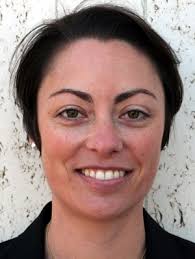 Sarah Fawcett(left) could not attend, but her and Dr Katye Altieri (right)students gave presentations during this session. Sarah Fawcett (
Sarah Fawcett(left) could not attend, but her and Dr Katye Altieri (right)students gave presentations during this session. Sarah Fawcett (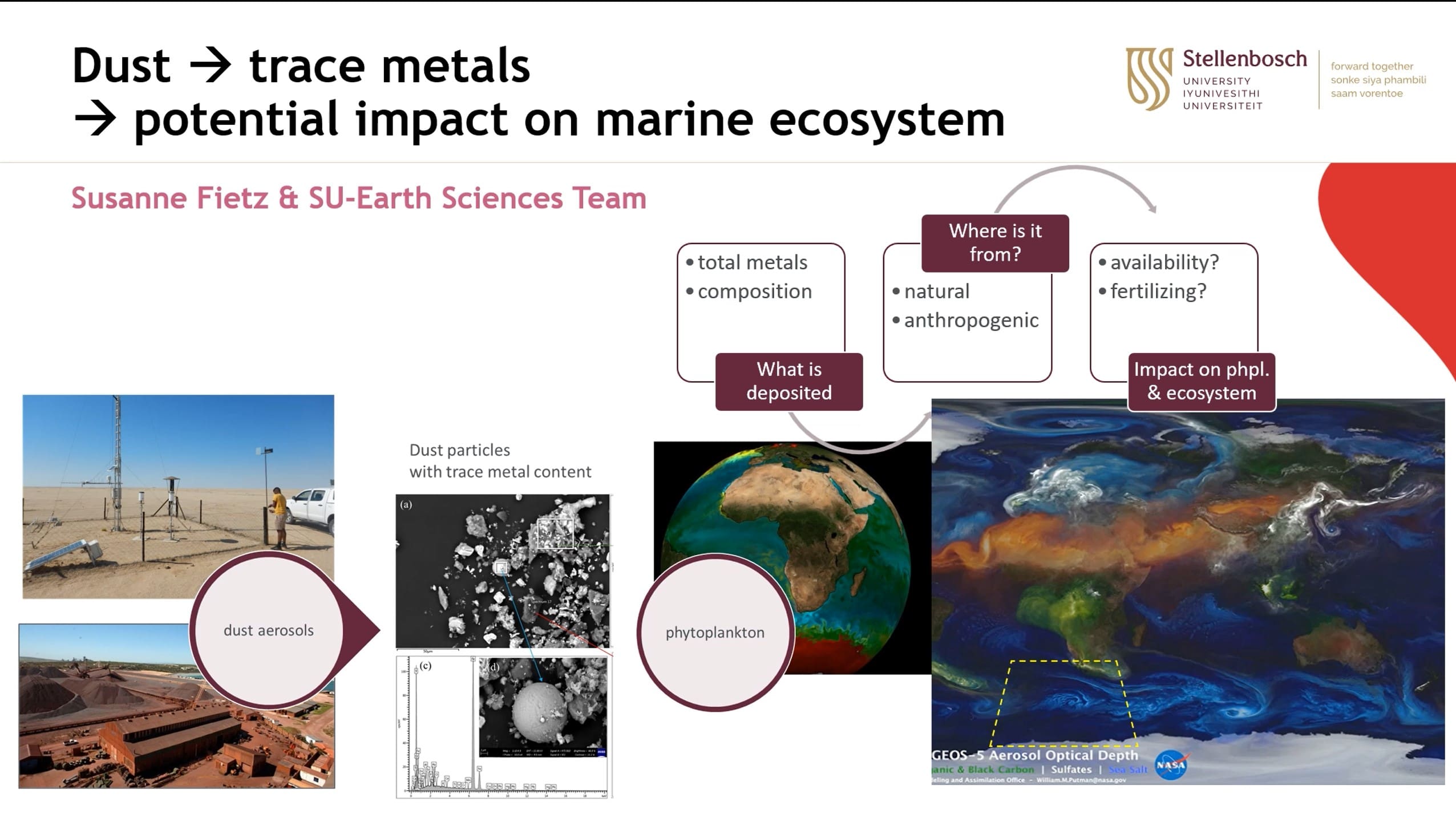 Suzanne Fietz and the Stellenbosch University Earth Sciences team submitted an excellent
Suzanne Fietz and the Stellenbosch University Earth Sciences team submitted an excellent 
 Above (l-r): Annie Bekker, Gerhard Durandt, Chante Van der Spuy, Nico de Koker
Above (l-r): Annie Bekker, Gerhard Durandt, Chante Van der Spuy, Nico de Koker Above(l-r): Micaela Melim, Ben Steyn, Brendon Nickerson, Nicole Taylor
Above(l-r): Micaela Melim, Ben Steyn, Brendon Nickerson, Nicole Taylor International speakers join the session and Sarah Nicholson of SOCCO present on robotics innovation. JP Barnard gave a presentation on data management during the cross-theme session chaired by Anne Treasure on day 1. Above(l-r): Jukka Tuhkuri, Miko Lensu, Sarah Nicholson, JP Barnard
International speakers join the session and Sarah Nicholson of SOCCO present on robotics innovation. JP Barnard gave a presentation on data management during the cross-theme session chaired by Anne Treasure on day 1. Above(l-r): Jukka Tuhkuri, Miko Lensu, Sarah Nicholson, JP Barnard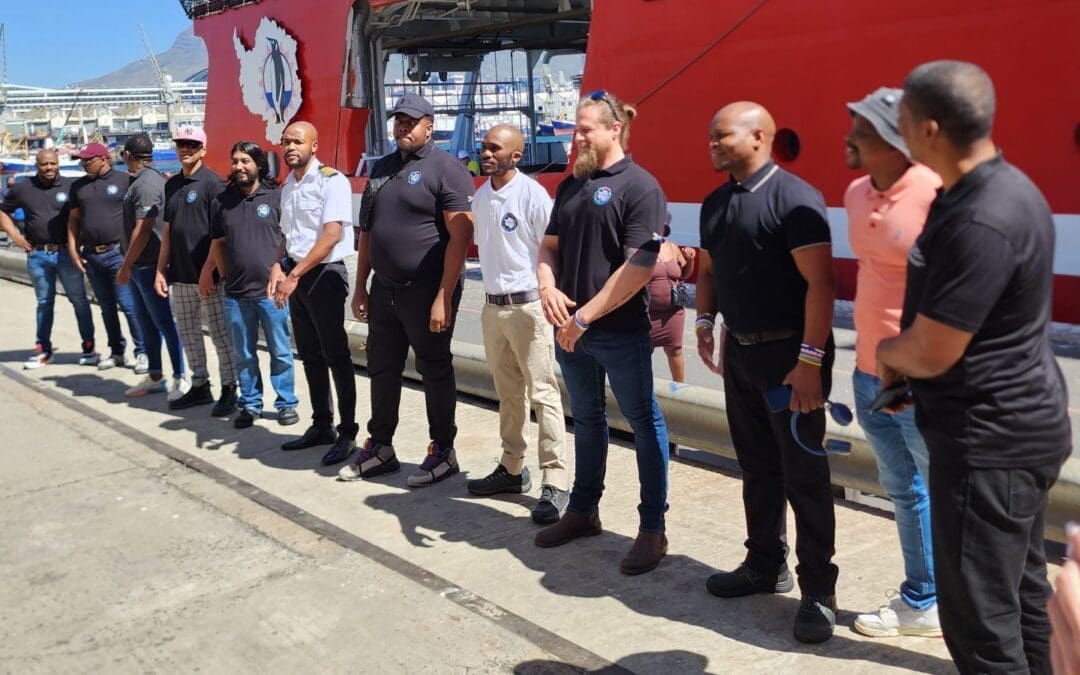
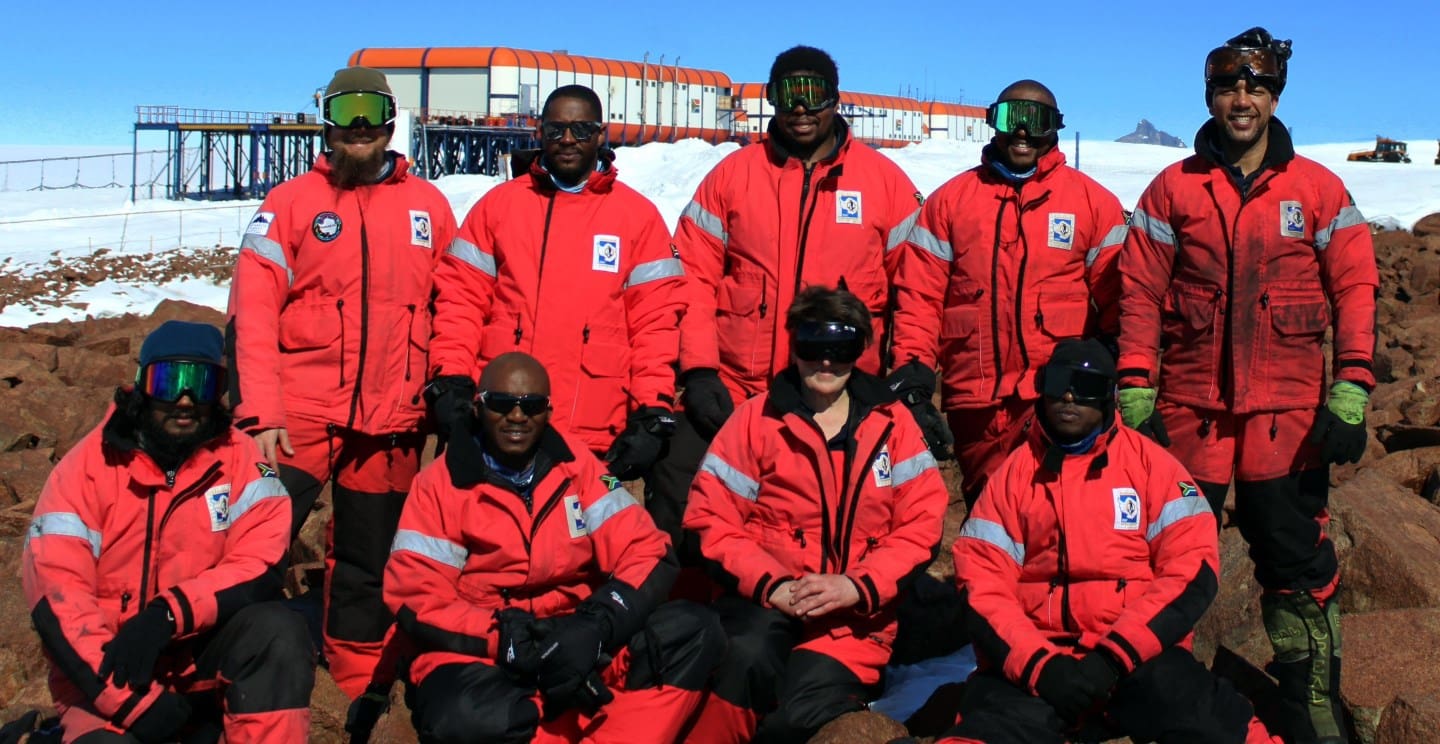 It was a great event to welcome back the SANAE62 overwintering team after they spent more than a year at Antarctica. Dr Aby Paton(front 3rd form left), medical doctor of the team did not return as she will be staying on at SANAEIV as team leader and medical doctor for SANAE63.
It was a great event to welcome back the SANAE62 overwintering team after they spent more than a year at Antarctica. Dr Aby Paton(front 3rd form left), medical doctor of the team did not return as she will be staying on at SANAEIV as team leader and medical doctor for SANAE63.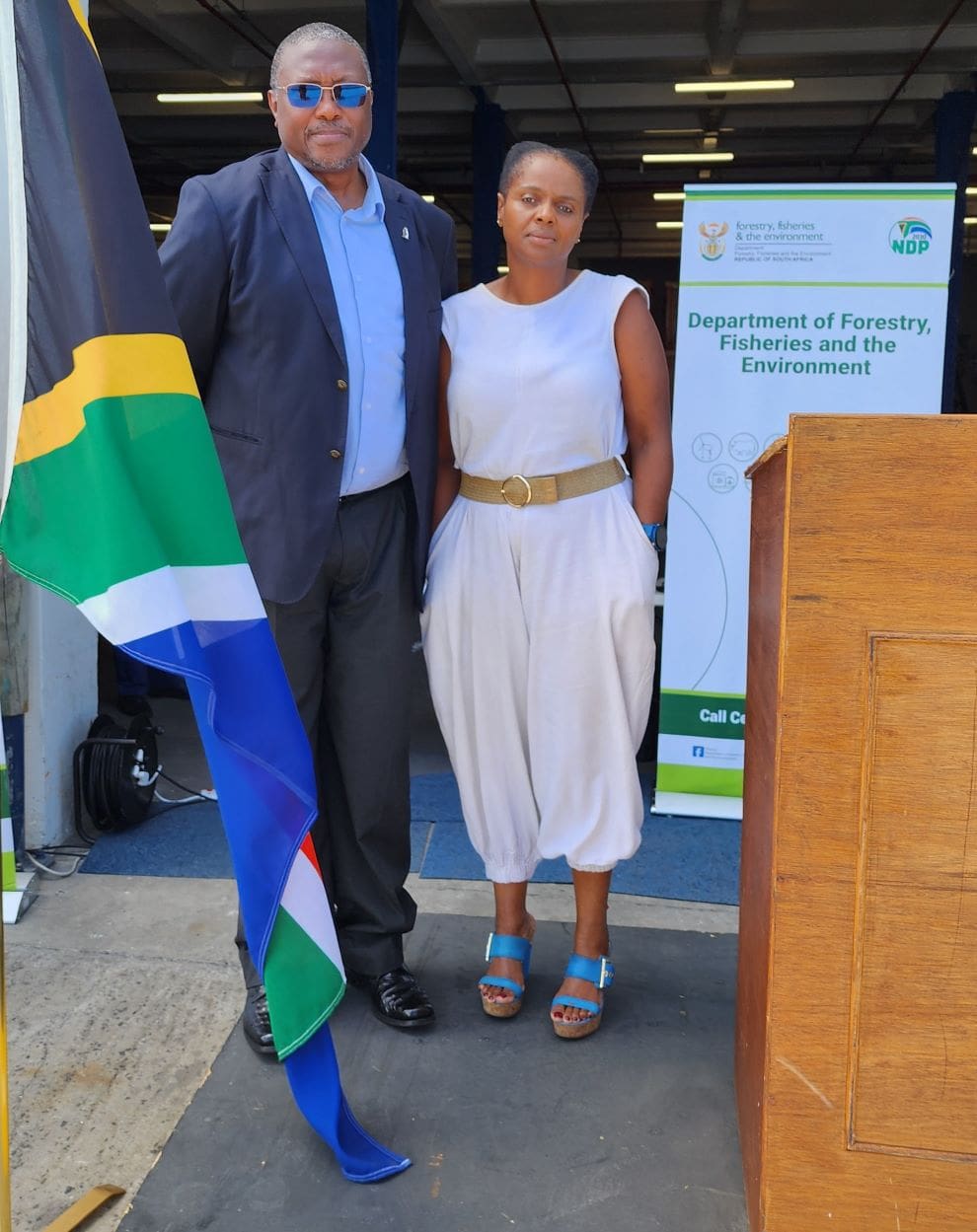
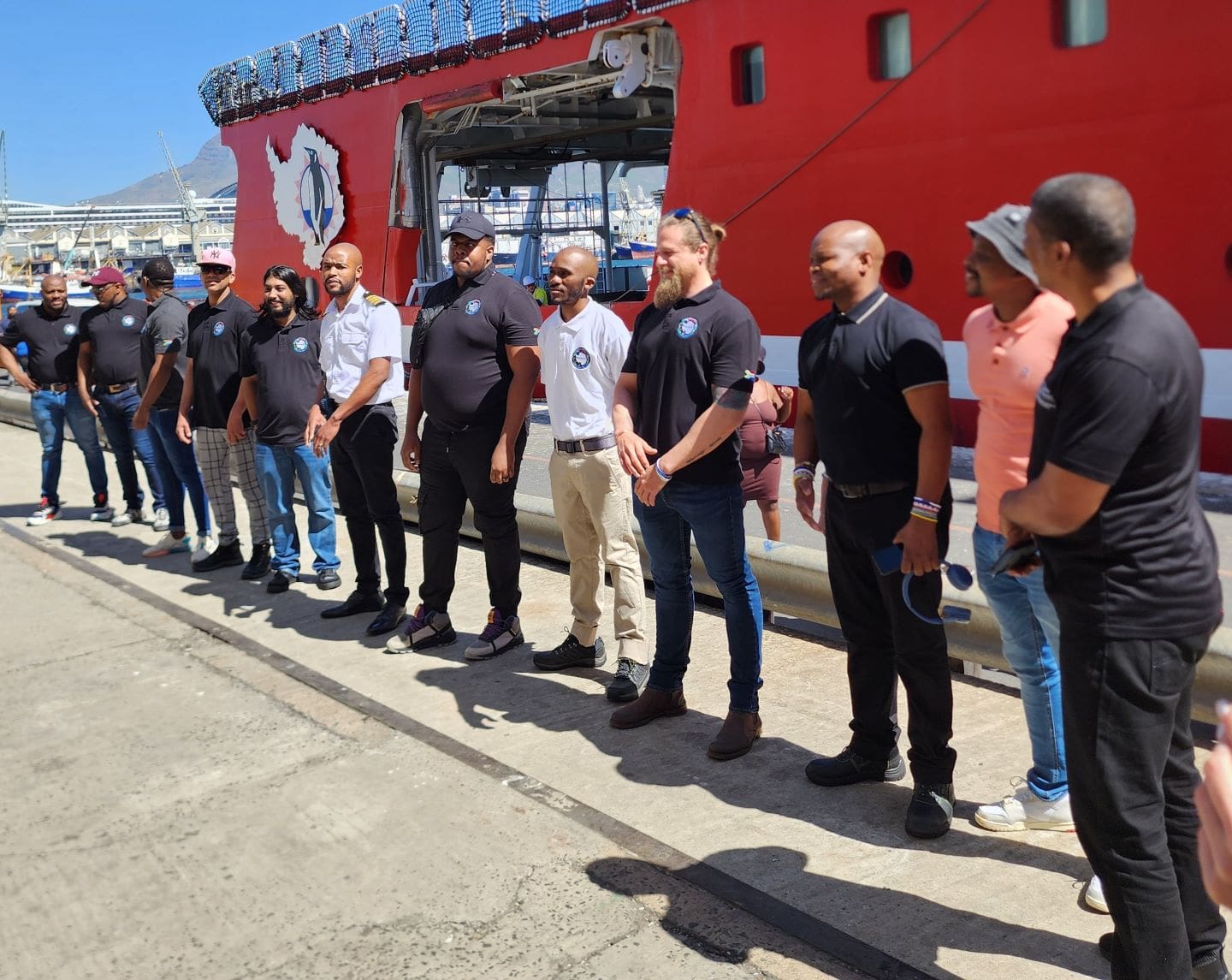 The event was organised by Ms Chuma Phamoli, Director of
The event was organised by Ms Chuma Phamoli, Director of 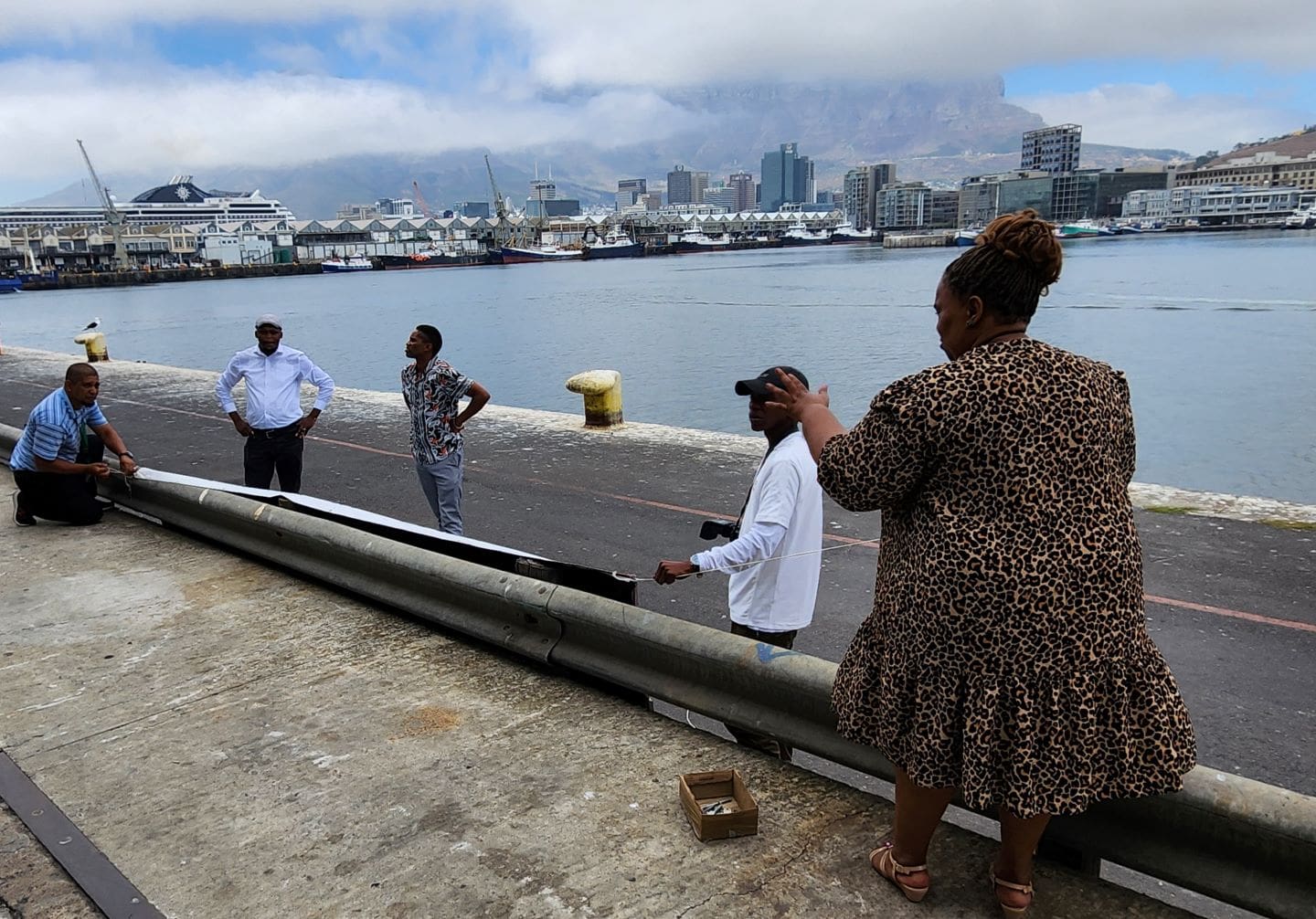
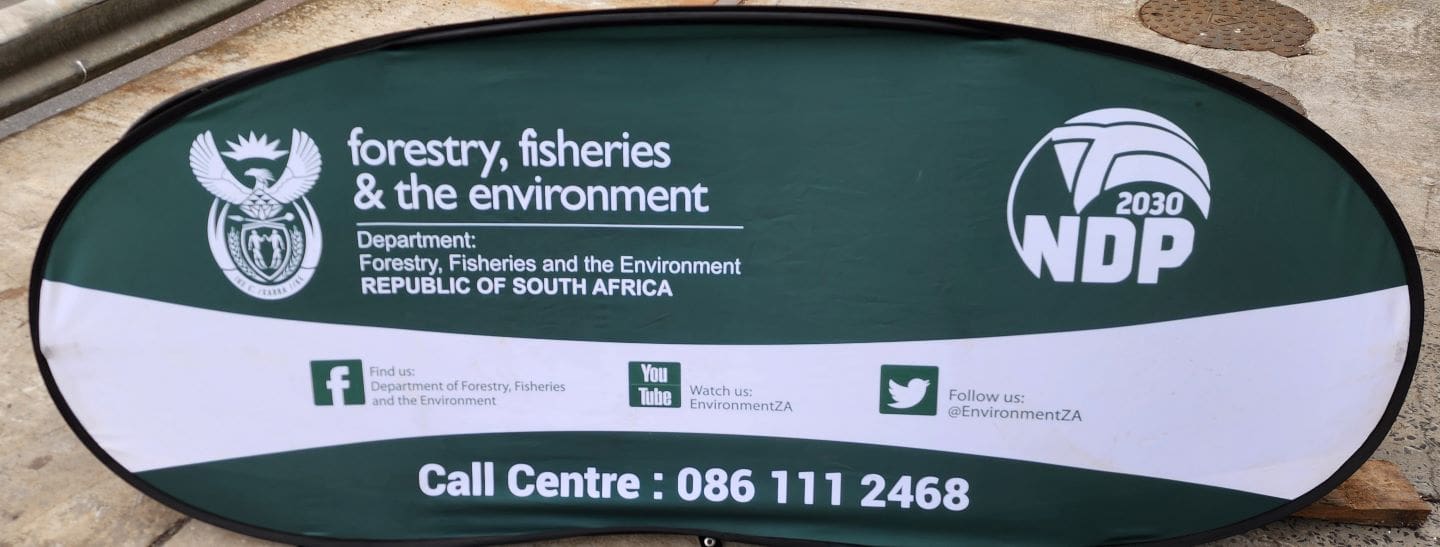
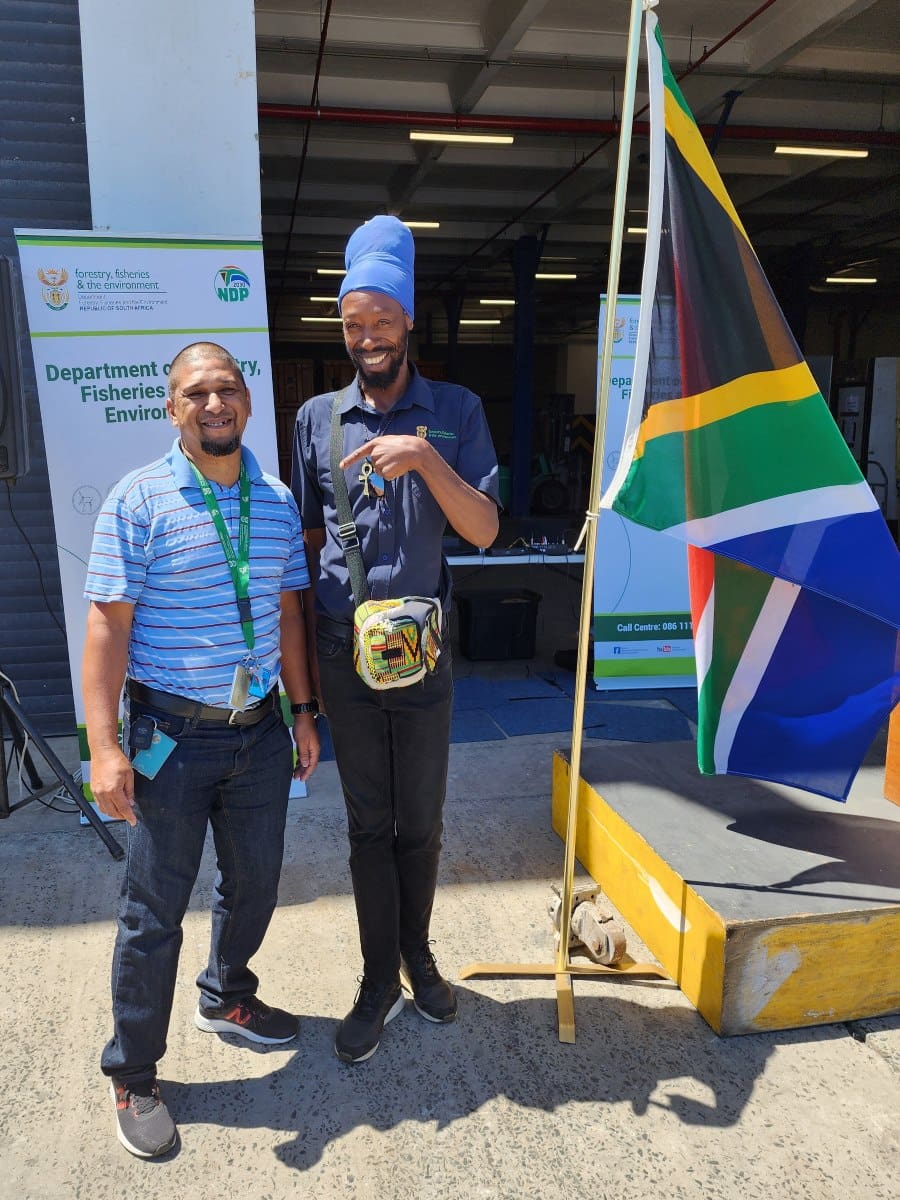 DFFE preparations for welcoming ceremony(image left). Zaid Watson and Mawonga Mandleni provided entertainment while everyone was waiting (image right)
DFFE preparations for welcoming ceremony(image left). Zaid Watson and Mawonga Mandleni provided entertainment while everyone was waiting (image right)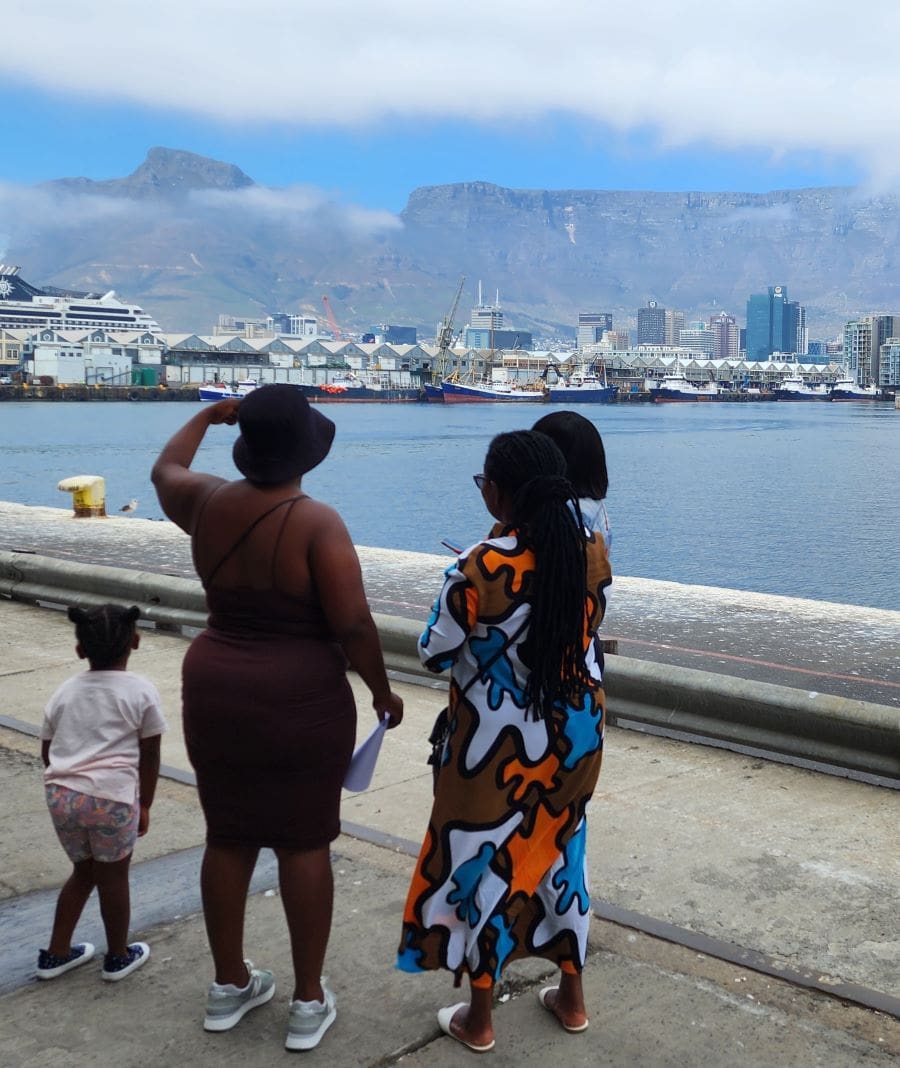

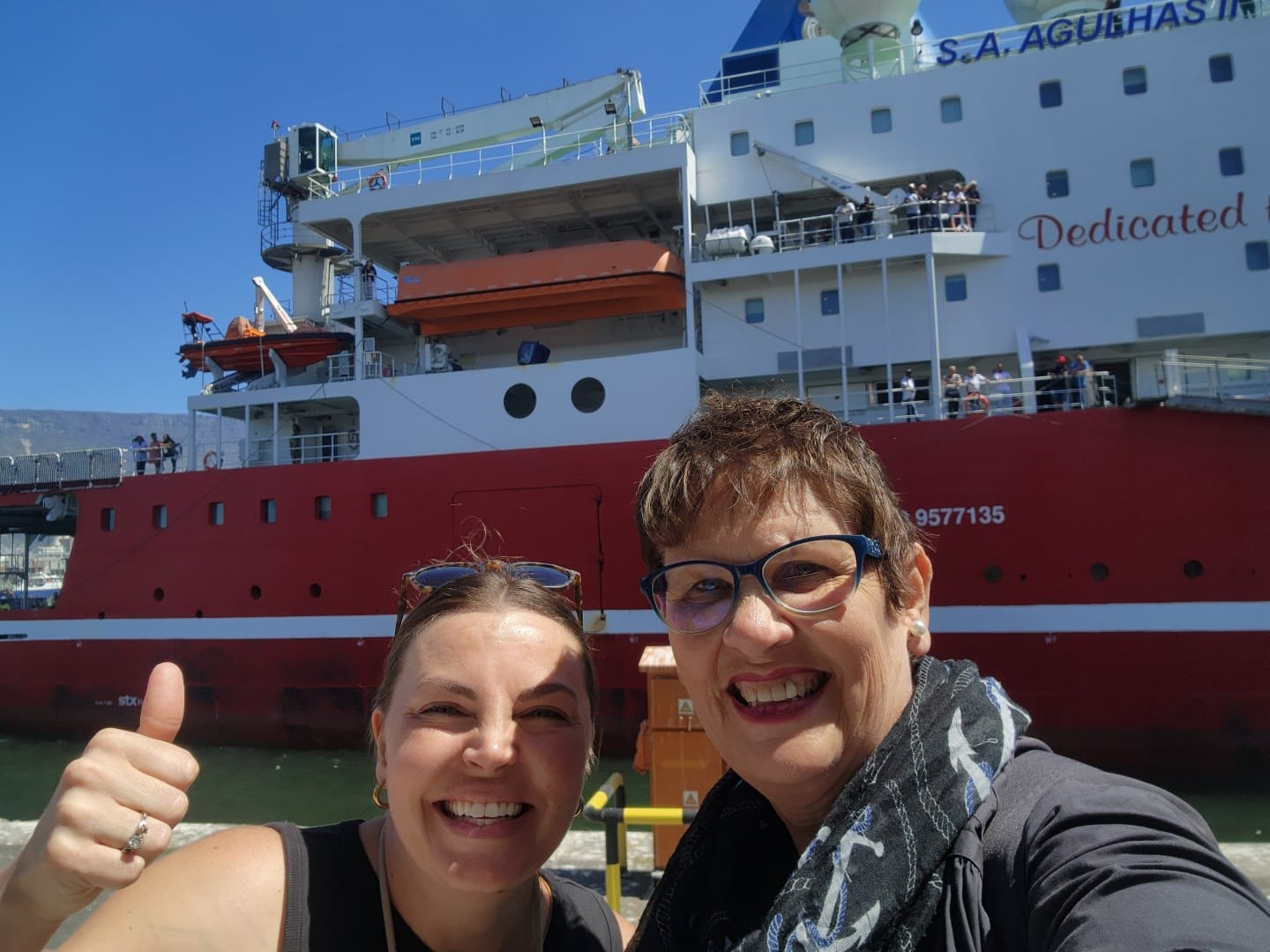 Family, friend and colleagues wait to greet everyone
Family, friend and colleagues wait to greet everyone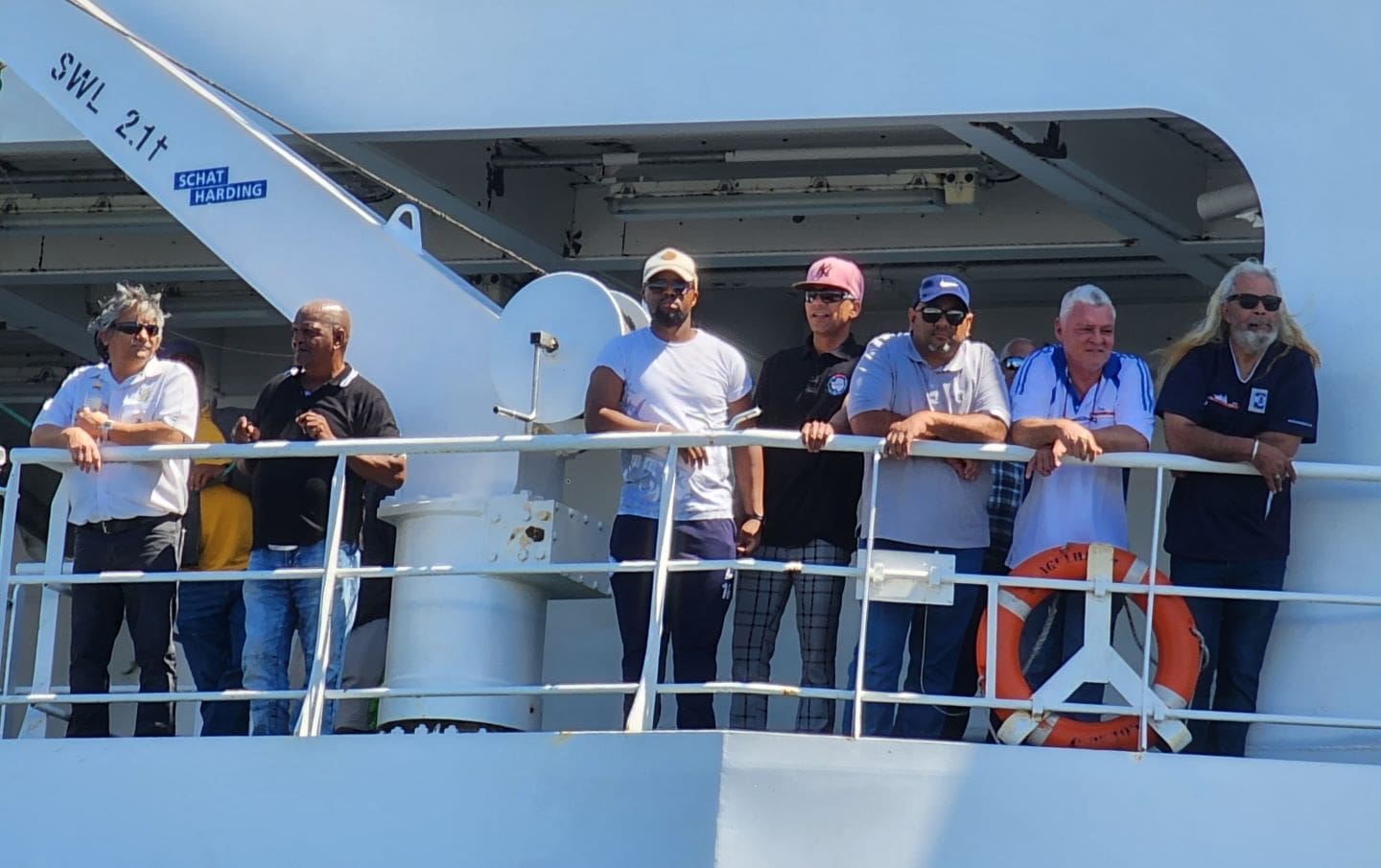
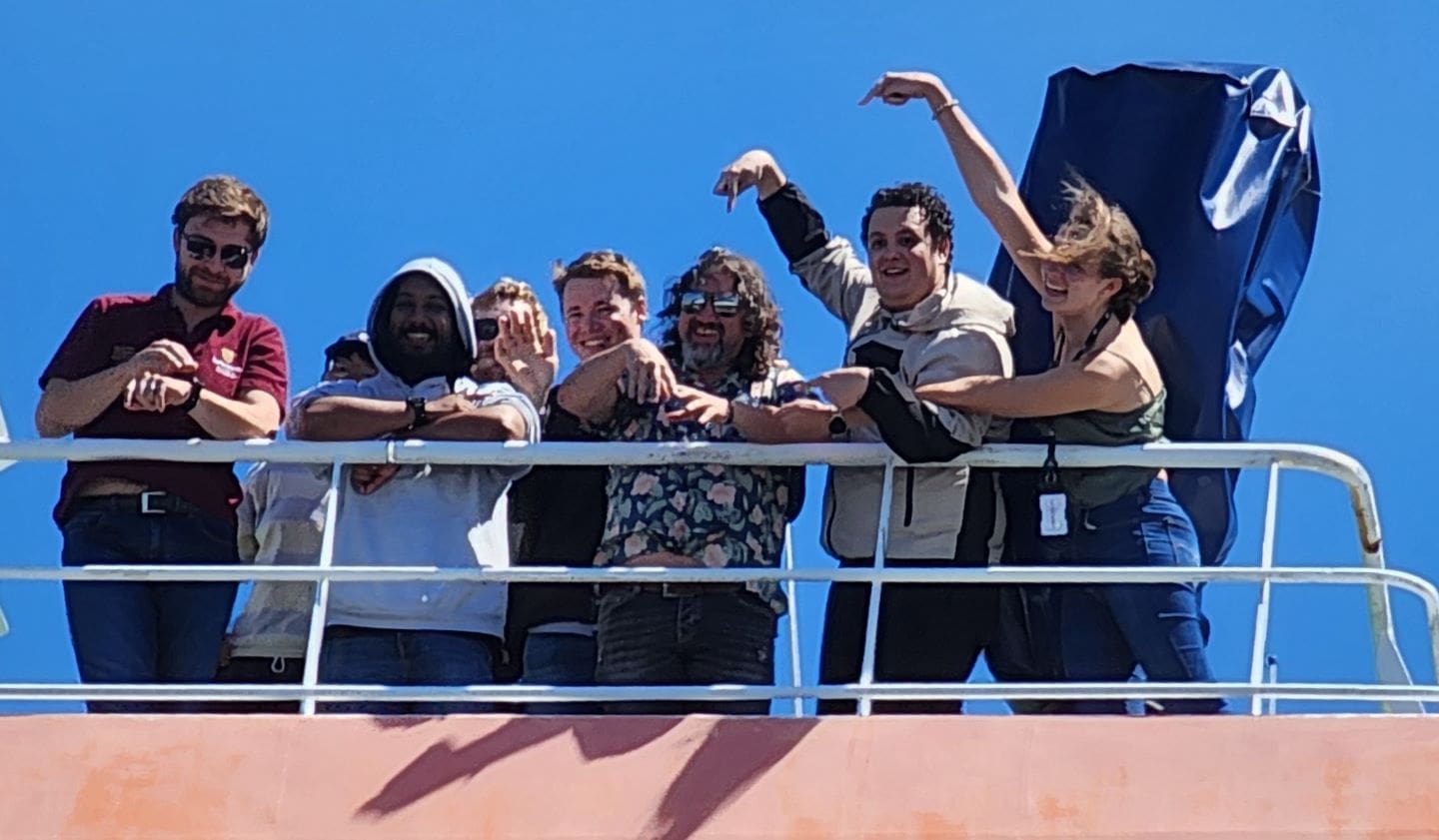
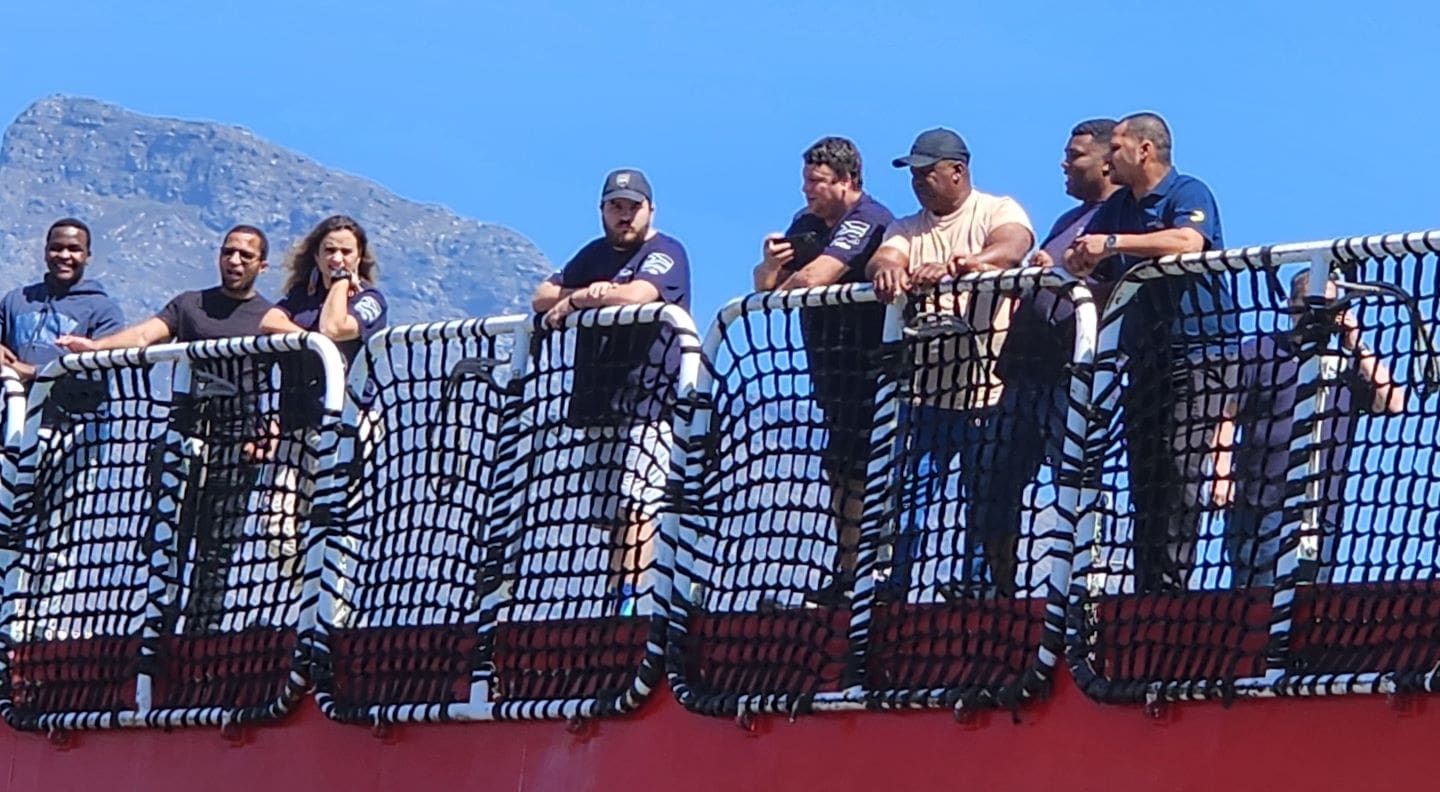
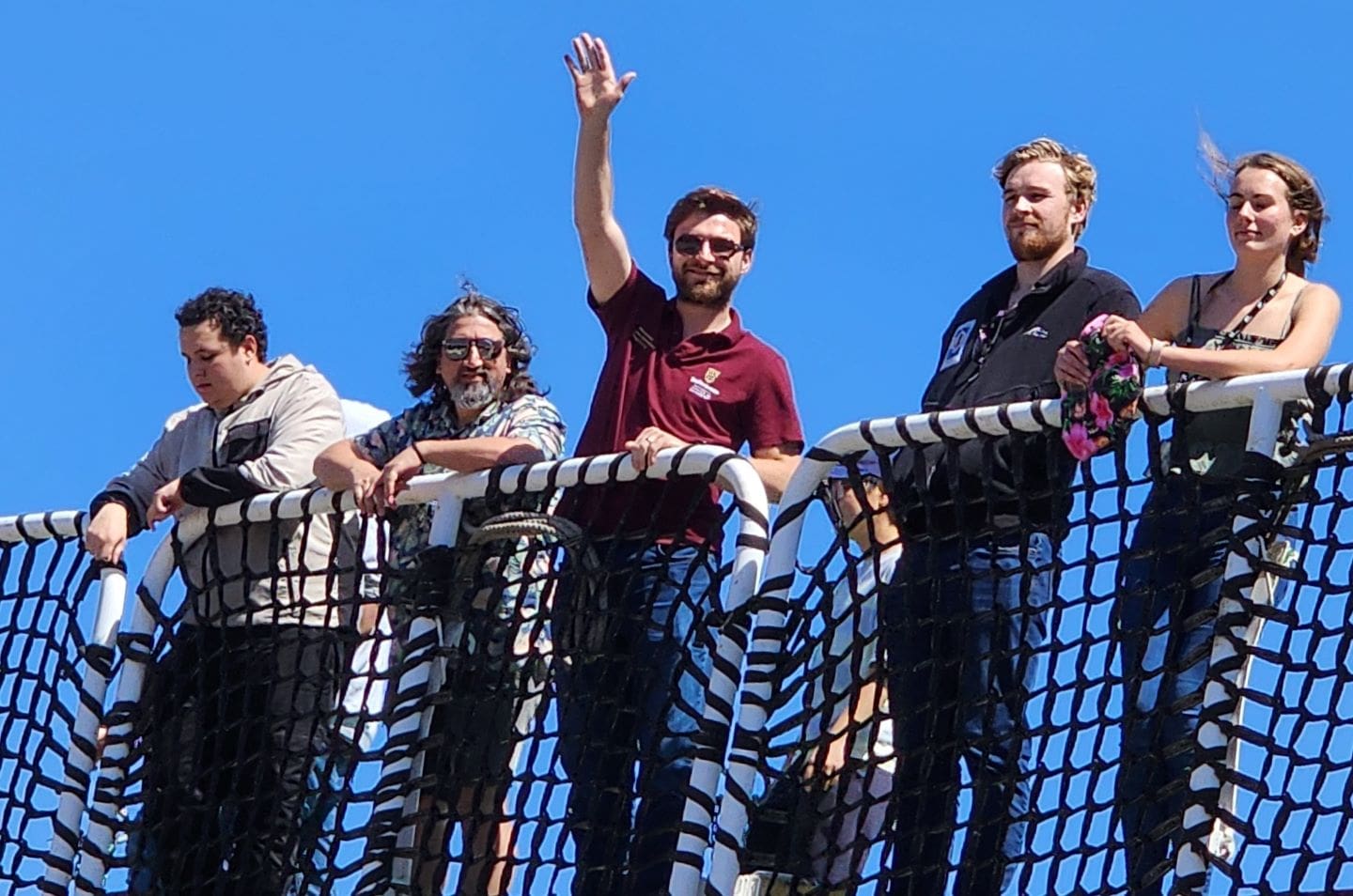

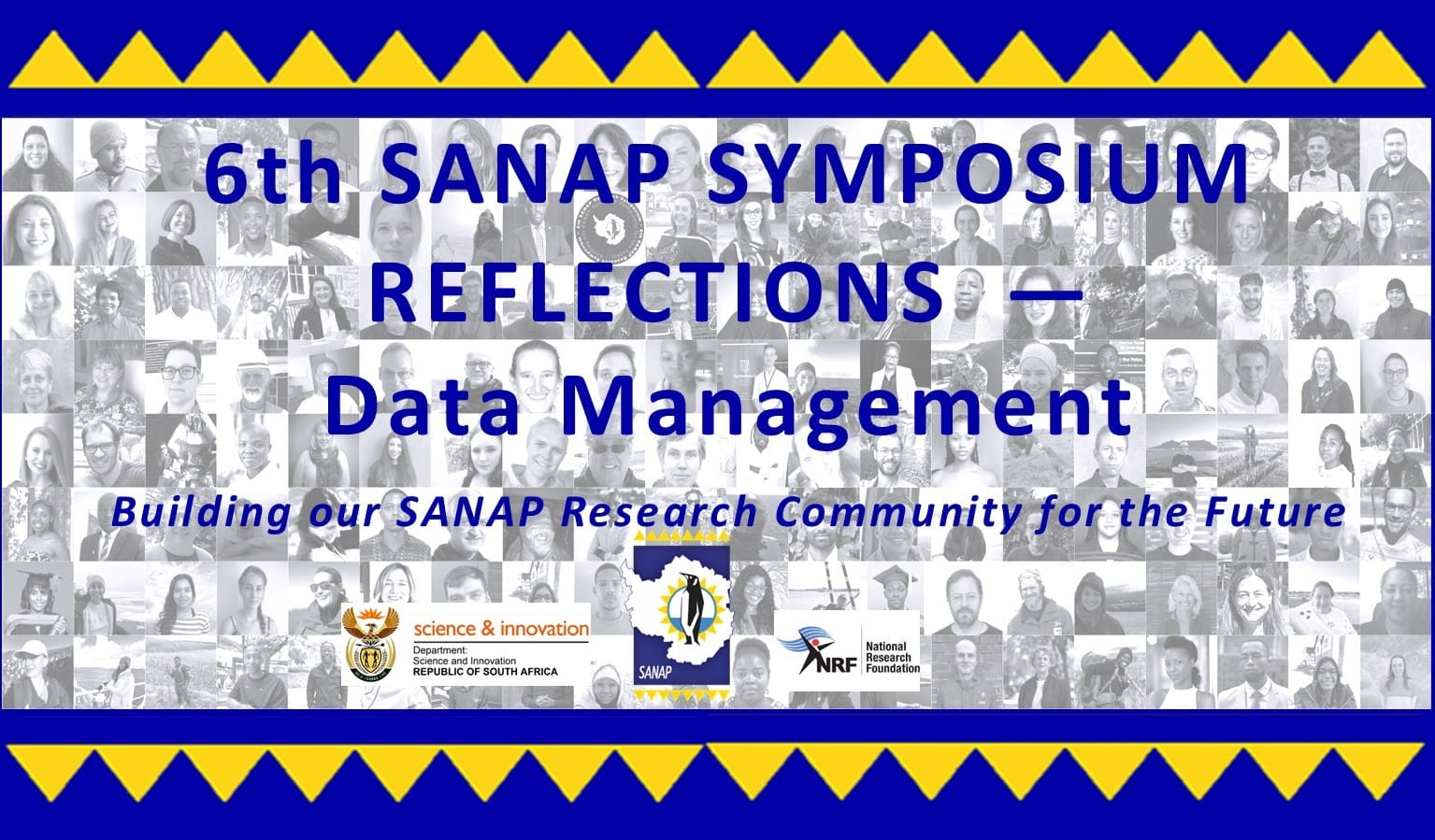 During the 6th Symposium sessions were allocated to cross cutting disciplines and it led to great presentations and discussions. 12- 16 February is
During the 6th Symposium sessions were allocated to cross cutting disciplines and it led to great presentations and discussions. 12- 16 February is 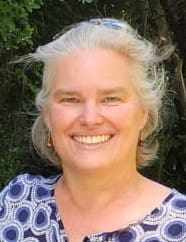 Anne Treasure(right) South Africa’s representative at Standing Committee on Data Management(SCADM) at SCAR and Data Products and Society Manager of the South African Polar Institute(SAPRI) chaired the main session on data management. This session included very interesting presentations from various science disciplines.
Anne Treasure(right) South Africa’s representative at Standing Committee on Data Management(SCADM) at SCAR and Data Products and Society Manager of the South African Polar Institute(SAPRI) chaired the main session on data management. This session included very interesting presentations from various science disciplines.
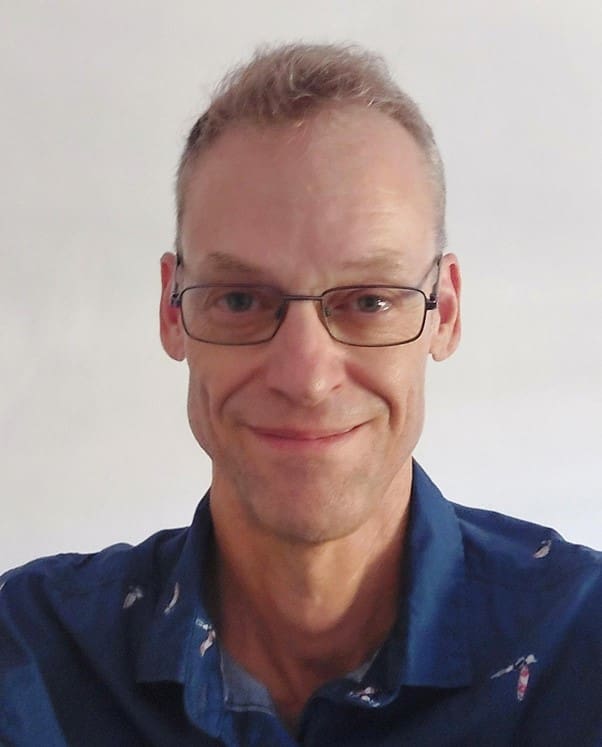
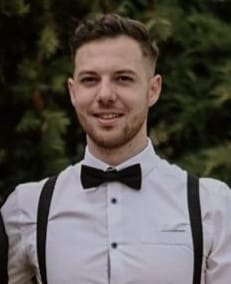
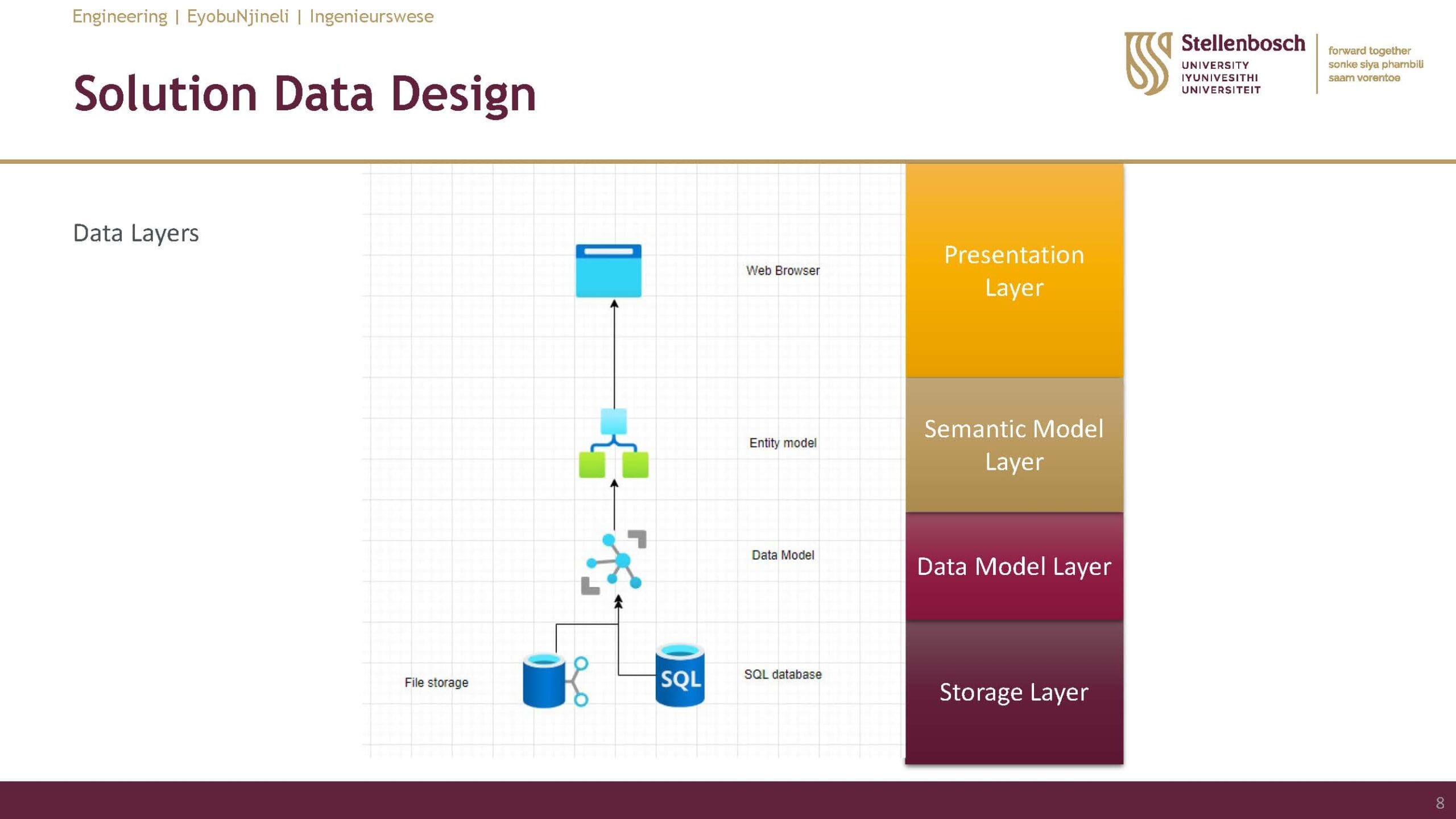
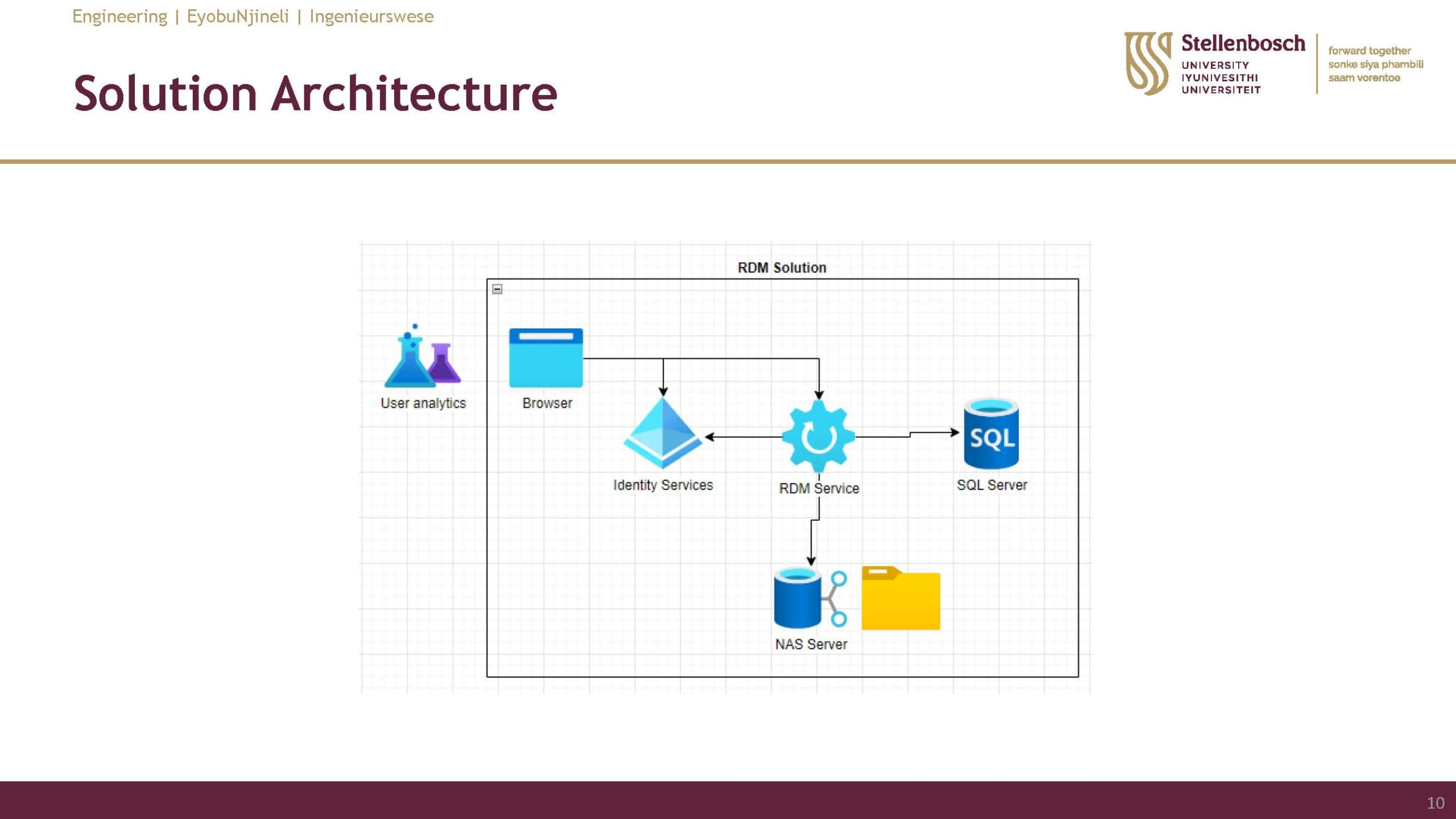
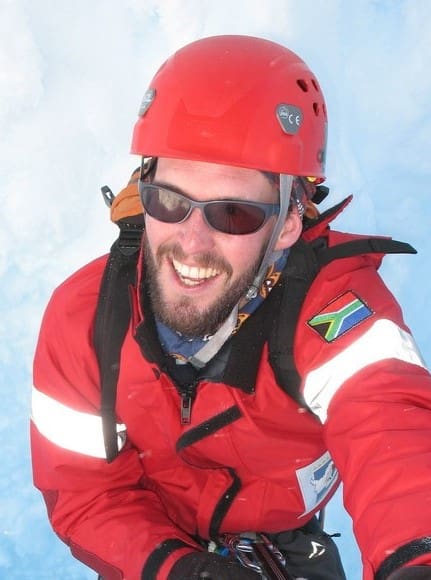
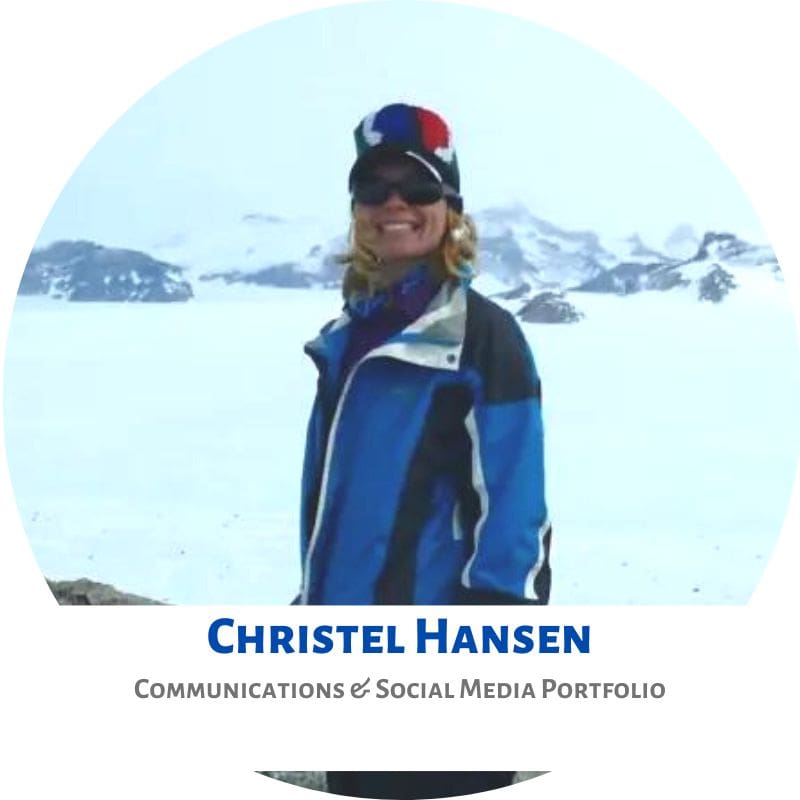
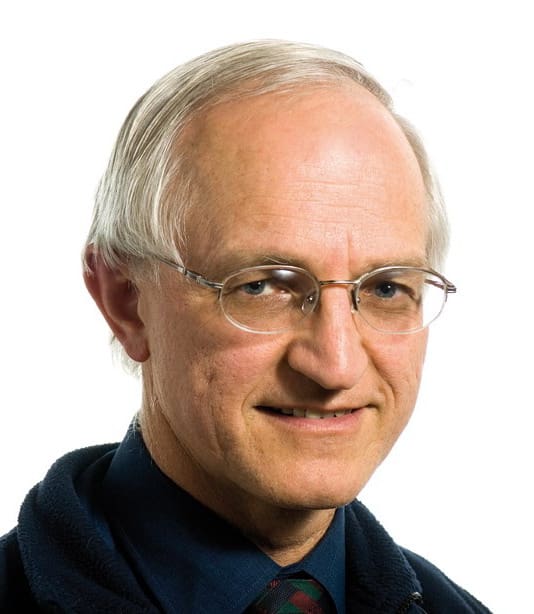
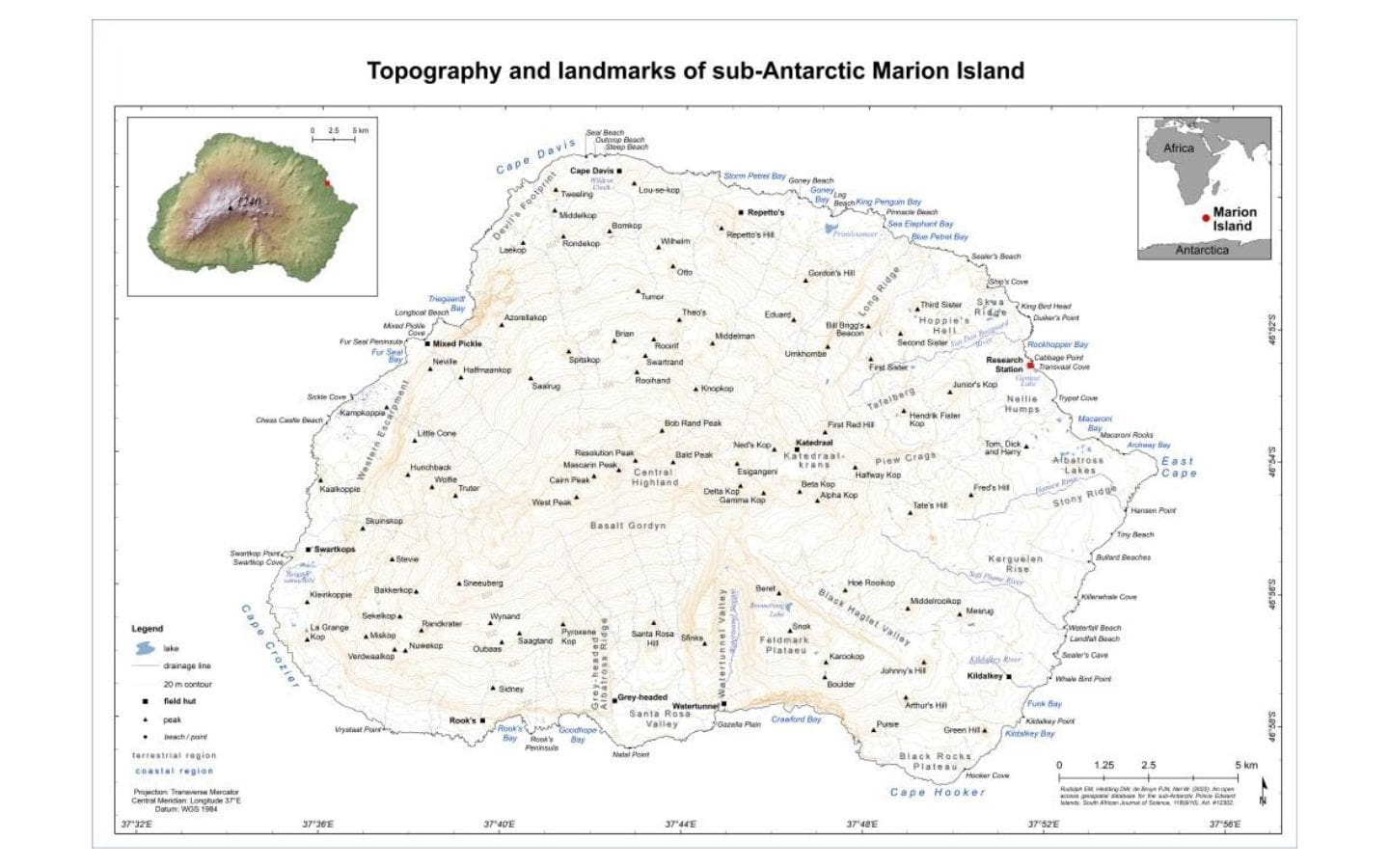 Christel Hansen
Christel Hansen